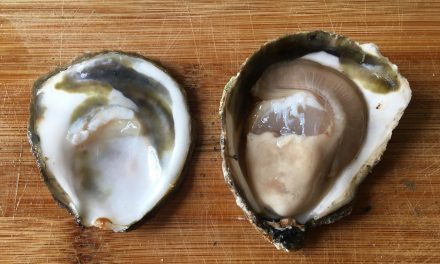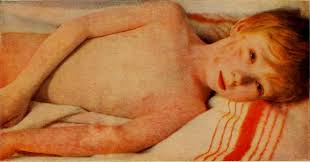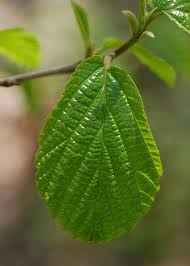By the late Dr. Mossa, Stuttgart., Translated from the Allg. Hom. Zeit.
Dr. Theophilus Ord, physician in the Hahnemann Sanitarium at Bournemouth, where he has an abundant opportunity of finding consumptives under treatment, has found that with these in the later stages of the disease Stannum jodat. is of all remedies the most effective. He makes the following declaration concerning the efficacy of remedies in these later stages of tuberculosis: When in spite of a good climate, with treatment in the open air, perfect hygienic surroundings and suitable nutrition, the disease nevertheless progresses, can medicines the ever stay the disease? When the tissue of the lungs continues being destroyed, and under the most favorable surroundings cavities continue to be formed and enlarged, new centers of softening appear and collapse, can our remedies in such a case where the lungs are affected alone and solely, and there is no symptom of tuberculosis of the bowels, we have no need to despair of the results of medication. He himself has without doubt checked the disease by the use of Homoeopathic remedies and has seen it cured in a number of cases. But as rule, not those remedies are effective in such case which acted best in the earlier stages of the disease, although these also may be indicated by their special symptoms; at least he could rarely effect any lasting results through the use of Arsenicum, Phosphoricum, Calcarea, etc., although these may often case the cough and pains, or assuage the gastric catarrh.
He therefore looked for those remedies which in their pathogenesis show such a state as we find in the last stages of phthisis. Thus he came to Iodium and Aurum. He actually found that Iodium, given in doses of five drops of the 1 D. In milk, has a decided effect in advanced cases, though he can not claim to have cured any case with this remedy. The same is true of Aurum, which seems to have a yet more definite influence on the tissue of the lungs than Iodium. Finally he came to Stannum, which in cases of bronchitis and of the so-called catarrhal consumption has frequently proved its virtue. In hahnemann’s Materia Medica Pura there are a number so symptoms which correspond to those in the last stages of consumption. Stannum, indeed, gives us a more perfect image of the last stage of phthisis than any other remedy in our pharmacopeia. We find in it a profuse mucopuriform expectoration, increasing weakness and emaciation, with fever in the evening, and severe perspiration at night. The most suitable form of this remedy seemed to him to be a combination of Stannum and Iodium; Stannum Iodatum. In cases where there was no tuberculous enteritis, and where the temperature in the open air did not exceed 1200, the author obtained results which he could soon prove through the stethoscope. Although such an improvement is frequently only transient, he has, nevertheless, also observed in many cases, which seemed to be hopeless, a more or less pronounced recovery. In such cases, he uses the remedy in the 2 D. Trituration, three times a day, one to three grains after the meal. If this trituration irritates the stomach, he gives the third trituration. When he cannot see any effect after a week’s use of this remedy, he prescribes Iodium 1 D., Five drops, three times a day in milk, which as in the case of Sulphur in chronic cases may serve to increase the reaction of the organism to this chief remedy. According to his observations, patients who have been treated for some time with Iodium are rarely seized with the tubercular enteritis, which seals the fate of so many victims; the use of this remedy is even able to prevent the appearance of the ominous tuberculous diarrhoea (see the Journal of the British Homoeop. Society, January, 1905).
Every Homoeopathic physician will be glad to hear some more leading symptoms for the use of Stannum iodat., especially as we have no particular proving of this remedy. In this respect the Dictionary of Practical Materia Medica, by Dr. J.H. Clarke, gives the following data:
O.S. Haines (in Clinique, VII. II) considers the remedy to be especially indicated when the patient had a light complexion and long eye-lashes and the disease takes a rapid course. Dr. Young-man (Hahnemann. Monthly, Jan., 1895) considers it to be one of the deeply penetrating remedies, and especially useful in chronic diseases of the chest with changes in the plastic tissues. The patients have a constant inclination to cough, which is excited, now here now there, by a tickling, dry irritation in the throat, frequently seeming to be located on the very tip f the tongue. This cough begins with a weak sound, attended with dyspnoea, but it soon increases in strength and sound, and causes a light, copious, light-Yellow expectoration which at first gives some relief, but is soon followed by a sensation of dryness, weakness in the larynx and the chest, as well as an increased constriction. An old smoker who had such a cough thought it came from the throat and ascribed it to smoking. Young-man found in him spots of condensation in the right lung. After the cough there was a sensation of weakness in the lung.
Stannum iodat. 3 D. Trituration gave great relief, and on removing to a higher location and giving up smoking he enjoyed perfect health.




